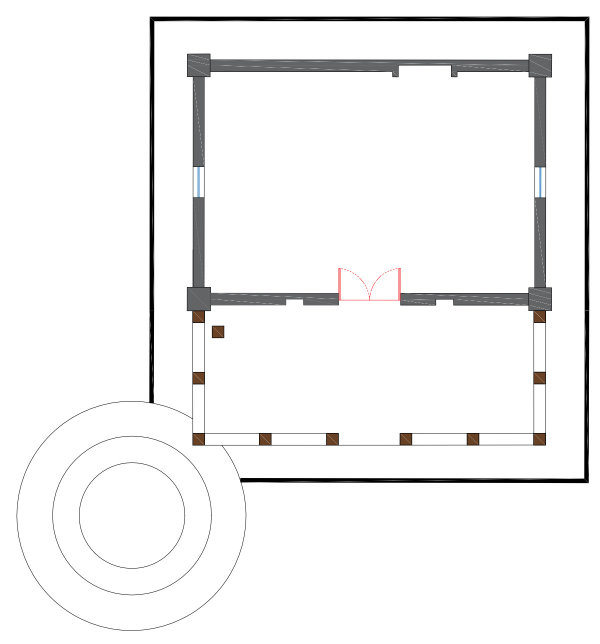Entry Fees : Rs. 20/- per Indian Visitor.
Rs. 400/- per Foreigner.
Camera Charges - Rs 100/- per Camera
 Saharia community living in the north-western part of Madhya Pradesh has been kept in the category of special backward tribe. They mainly reside in Shivpuri, Guna, Gwalior, Morena, Bhind, Vidisha, Raisen, Sehore and Sheopur districts in Madhya Pradesh. Kota, Shahbad, Kishanganj areas of Rajasthan also have some villages of Saharia people there. According to the 1991 census, the total number of Saharia tribe in Madhya Pradesh was 3,32,748.
Saharia community living in the north-western part of Madhya Pradesh has been kept in the category of special backward tribe. They mainly reside in Shivpuri, Guna, Gwalior, Morena, Bhind, Vidisha, Raisen, Sehore and Sheopur districts in Madhya Pradesh. Kota, Shahbad, Kishanganj areas of Rajasthan also have some villages of Saharia people there. According to the 1991 census, the total number of Saharia tribe in Madhya Pradesh was 3,32,748.
The Sahariyas are considered a sub-branch of the Kolariyan family and Bheels. Sahariya community is also called by the names Seher, Sair, Savar, Saonar, Sahra etc. In the Guna-Shivpuri region, they are called 'Raut'. They like to be called ‘Khutia Patel’ because it is a respectable title. Sahariyas consider themselves the younger brothers of Bheels and hence call themselves the children of Valmiki and Shabari. According to mythology, the hunter named 'Jara' who became the reason of Krishna's death belonged to the Samvar community.
Sahariya basti (colony) is called 'Sahrana' and the houses in it are built on three sides like U shape of English. In the middle, a mixed courtyard of all the houses is formed. Sahariya women make auspicious symbols on the door frame of the main door, Dehri, courtyard, stove in the kitchen etc. with yellow clay, chuhi, geru and nowadays with other market colors. This coloring is done not only on special occasions but almost regularly in the kitchen etc.
 Sahariya men and women prefer dark bright colors and their costumes also have the impression of other communities of Rajasthan. Apart from farming, Sahariyas do the work of collecting forest produce. Sahariyas eat jowar, bajra (millets) roti along with a variety of vegetables and roots-potatoes obtained from the forest. Gram flour bread is made on auspicious occasions like marriage etc. Sahariya is also very fond of hunting and fishing. Along with the knowledge of herbs, Sahariyas are also very skilled in collecting honey from beehives. Apart from this, making baskets, ropes, brooms, cutting wood from the forest etc. are their some other traditional works.
Sahariya men and women prefer dark bright colors and their costumes also have the impression of other communities of Rajasthan. Apart from farming, Sahariyas do the work of collecting forest produce. Sahariyas eat jowar, bajra (millets) roti along with a variety of vegetables and roots-potatoes obtained from the forest. Gram flour bread is made on auspicious occasions like marriage etc. Sahariya is also very fond of hunting and fishing. Along with the knowledge of herbs, Sahariyas are also very skilled in collecting honey from beehives. Apart from this, making baskets, ropes, brooms, cutting wood from the forest etc. are their some other traditional works.
Sahariyas have been living with the folk communities for a long time, that's why they have started following popular deities and festivals. Sita is their most adorable goddess, apart from this many village deities such as Thakur Dev, Bheru Dev, Nahar Dev, Dareth Dev, Karas Dev, Bhumiyan Dev, Hariman Dev and Tejaji are also worshiped.
The Sahariya community has lost its own language and they speak the dialect of the area where they live, but their Ceremonial songs, Seasonal songs, Goth-leela, Pandav Katha, Languria, Phag, Janaki Vivah songs, Chakia songs, Sagdawat- Bagdavat Katha etc. gives an idea of their interest in story-telling. Lehengi is a special dance form of Sahariyas and they also have a tradition of performing theatrical songs based on the life of Tejaji.

Any flat and square piece of land is chosen for the house. Later the women plaster the walls of the house with Chhuhi clay, Geru (ocher) or yellow clay. Sahariya women are very skilled in making graffiti and ‘Mandanas’ on the wall according to the occasion.
Every house has a big earthen pot ‘Pei’ to store the grain, on which Sahariya women carve the shapes of flowers, tree-leaves, human shapes, animal shapes and birds with fine lines of clay. Their decoration attracts the attention of visitors. The practice of making Otla (platform) in the house-courtyard is also found equally everywhere.

Lal Singh, Pardasi Singh, Ram Singh, Narendra Singh, Umesh Singh, Bhuneshwari, Sumantri, Laxmi Bai, Jyoti Devi
Region – Shivpuri